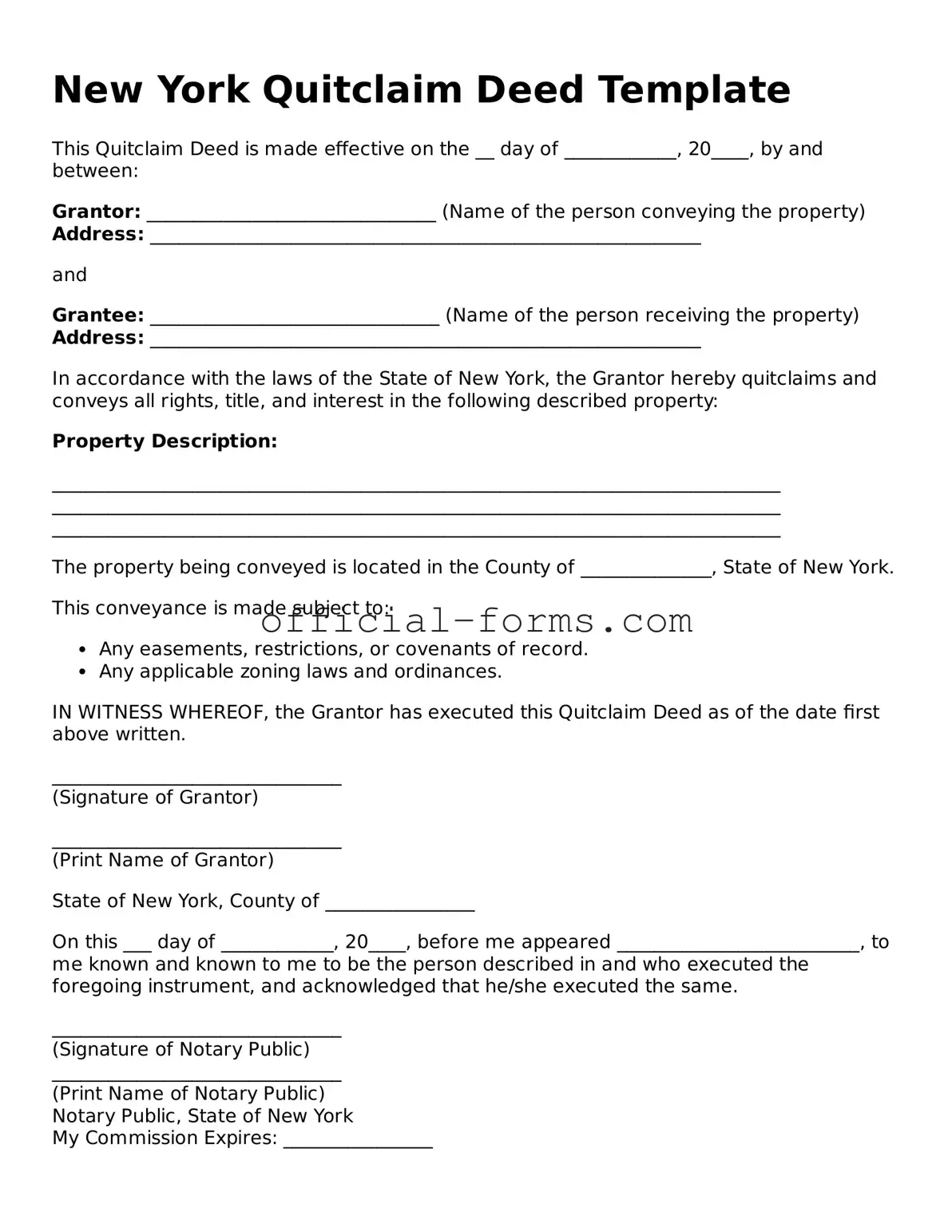Filling out a New York Quitclaim Deed form can be a straightforward process, but many people make common mistakes that can lead to complications down the road. One frequent error is failing to include the correct legal description of the property. This description should be precise and detailed, identifying the property’s boundaries clearly. Omitting or incorrectly stating this information can create confusion and may even render the deed invalid.
Another mistake involves not providing the names of all parties involved. Both the grantor (the person transferring the property) and the grantee (the person receiving the property) must be clearly identified. If one party is left out or their name is misspelled, it could lead to legal disputes or issues with ownership later on.
People often overlook the need for signatures. Both the grantor and the grantee must sign the deed for it to be legally binding. In some cases, individuals mistakenly believe that only the grantor's signature is necessary. This misconception can lead to delays in the transfer process.
Not having the document notarized is another common pitfall. A Quitclaim Deed in New York must be notarized to be considered valid. Without a notary's signature and seal, the deed may not be accepted by the county clerk’s office, which can hinder the property transfer.
Additionally, failing to check for any outstanding liens or mortgages on the property can lead to significant problems. If the property has debts attached to it, the new owner may find themselves responsible for these obligations. Before completing the deed, it is wise to conduct a thorough title search.
Another mistake is neglecting to record the Quitclaim Deed with the county clerk. Recording the deed is crucial, as it provides public notice of the property transfer. If the deed is not recorded, future buyers or lenders may not be aware of the new ownership, which can create complications.
Some individuals also forget to include a date on the Quitclaim Deed. While it may seem minor, the date is important for establishing the timeline of the property transfer. Without a date, it can be difficult to determine when the transfer took place, which may affect rights to the property.
People sometimes use incorrect forms or outdated versions of the Quitclaim Deed. It is essential to ensure that the form being used is the most current version provided by the New York state or local authorities. Using an outdated form can lead to rejection by the county clerk.
Misunderstanding the implications of a Quitclaim Deed can also lead to mistakes. Unlike a warranty deed, a Quitclaim Deed does not guarantee that the grantor has clear title to the property. This lack of warranty means that the grantee takes on a certain level of risk. It is important to understand these risks before proceeding.
Lastly, individuals often fail to seek legal advice or assistance when filling out the Quitclaim Deed form. While it may seem simple, the nuances of property law can be complex. Consulting with a legal professional can help ensure that the deed is filled out correctly and that all necessary steps are followed, ultimately protecting everyone involved.
